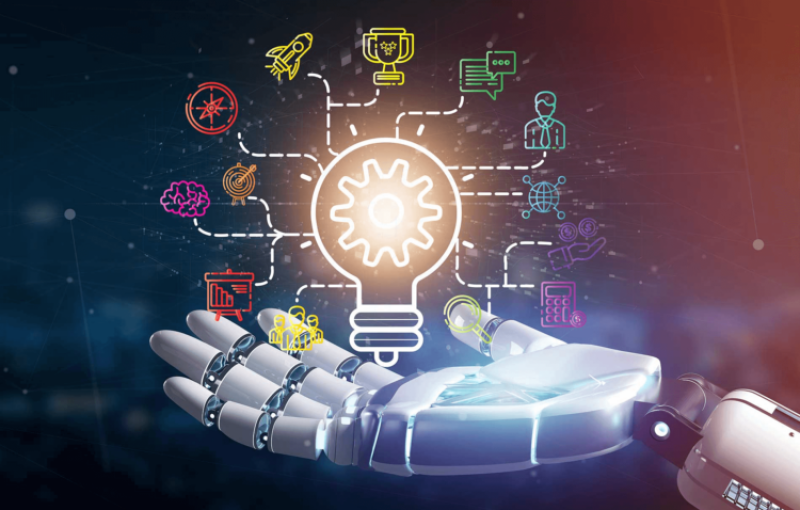As 2024 comes to an end, it’s time to reflect on the software development breakthroughs that have shaped this transformative year. While these advancements are often discussed in technical circles, their impact extends far beyond developers. They’re reshaping businesses, driving innovation, and influencing the digital tools we use daily. Let’s explore the most significant trends and why they matter as we prepare for 2025.

Generative AI: Changing How Software Is Built
One of the most remarkable developments this year has been the rise of generative AI in software development. These tools, like GitHub Copilot and OpenAI’s Codex, have progressed from simply suggesting snippets of code to generating entire blueprints for applications. Imagine a digital assistant that not only helps fix errors but can also design parts of a program from scratch.
This evolution has revolutionized the way software is created, allowing businesses to deliver updates faster and with fewer bugs. A report from Forrester Research found that AI-powered tools helped development teams reduce project timelines by as much as 35%. For businesses, this means faster product launches and cost savings. For everyday users, it means more reliable apps and services.
Looking ahead to 2025, embracing generative AI could become a competitive edge for teams. Whether you’re managing a tech project or running a business, investing in these tools can help streamline workflows and close skill gaps.
Low-Code/No-Code: Empowering Everyone
Building software is no longer limited to professional developers. Low-code and no-code platforms have become mainstream in 2024, enabling people without technical backgrounds to create applications. Platforms like OutSystems and Microsoft Power Apps allow users to build functional tools using simple drag-and-drop interfaces.
Take, for example, a small business that launched a loyalty program through a custom app—created in just weeks without hiring a developer. These platforms are democratizing software creation, allowing startups and small businesses to innovate quickly and compete with larger companies. Gartner predicts that by 2025, two-thirds of all applications will be built using low-code platforms, making this a trend to watch.
If you’re considering ways to streamline your business operations or engage customers digitally, these platforms are a great starting point. They’re cost-effective, fast, and accessible even to those without a technical background.
Quantum Computing: A Glimpse Into the Future
While still in its early stages, quantum computing took significant steps forward in 2024. Tech giants like IBM and Google have developed tools that allow developers to experiment with quantum algorithms. These systems, unlike traditional computers, can solve highly complex problems in seconds, opening up new possibilities in fields like cryptography, logistics, and data analysis.
To put it simply, quantum computing is like a new kind of calculator—one that can solve puzzles so intricate that even the most powerful computers today would take years to crack them. While practical applications are still emerging, the potential is enormous. Businesses in data-heavy fields like finance and healthcare should start paying attention to this space, as quantum computing may redefine what’s possible in the next decade.
A Better Experience for Developers
2024 was also a year of transformation for the people behind the code: developers. With tools like JetBrains Fleet and GitHub Codespaces, companies focused on improving the developer experience (DX). These tools simplify workflows, making it easier and faster to write, test, and deploy code.
Why does this matter to non-developers? Better tools lead to happier developers, and happier developers build better software. This means fewer glitches, faster updates, and more innovative apps for everyone. Businesses aiming to attract and retain top talent in 2025 should prioritize tools and practices that support developer productivity.
Cybersecurity: Raising the Bar
With cyberattacks becoming more sophisticated, 2024 saw a renewed focus on cybersecurity. Companies adopted frameworks like the Software Bill of Materials (SBOM), which tracks every component in an application to ensure transparency and safety. This initiative, alongside Zero Trust Architecture (ZTA), is helping businesses secure their systems against emerging threats.
For users, these advancements mean safer apps and fewer data breaches. For businesses, cybersecurity isn’t just about protection—it’s about maintaining trust with customers. As the digital landscape continues to evolve, staying informed about cybersecurity best practices is critical for 2025.
Preparing for 2025
The breakthroughs of 2024 show that the software development world is becoming faster, more accessible, and more secure. Whether you’re a business leader, a tech enthusiast, or simply someone curious about the future, these trends will shape the tools and services you rely on.
In 2025, expect AI to play an even bigger role in how software is created and used. Businesses should consider low-code platforms to innovate quickly, explore emerging technologies like quantum computing, and prioritize cybersecurity to protect their systems and customers.
At Shinetech, we’re excited to be part of this journey, helping businesses navigate these changes and build solutions for the future. What do you think was the most exciting software trend of 2024? We’d love to hear your thoughts—share them in the comments below!